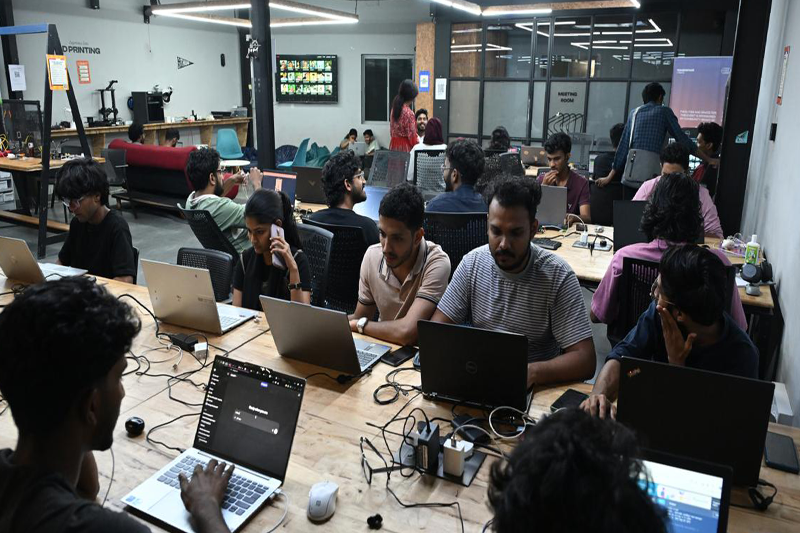
Maharashtra to Transform ITIs into Community Learning Centres After Hours: 5 Lakh People to Be Skilled by Year-End
The State Skill Education Department of Maharashtra is embarking on a transformative mission to reimagine Industrial Training Institutes (ITIs) as community learning centres — open not just to formal trainees, but to the general public, artisans, hobbyists, and aspiring entrepreneurs. Under a bold new initiative, these traditionally job-oriented institutions will open their doors after working hours to offer short-term, diverse, and locally relevant training to anyone willing to learn a new skill.
This initiative, which will cover all 419 ITIs and 141 technical high schools across Maharashtra, is set to be flagged off by Prime Minister Narendra Modi this week. The scale and ambition of the programme are unprecedented — aiming to train 75,000 people in its very first batch, with a target of reaching nearly 5 lakh individuals by the end of the year.
From Job Pipelines to Skill Ecosystems
The concept underpinning this programme is simple but powerful: democratise access to skill development by turning ITIs into local hubs of learning after hours. What was once a formal training institute geared primarily toward industrial trades will now evolve into a neighbourhood centre for learning, entrepreneurship, and personal development.
Whether someone wants to conduct special poojas for the upcoming Kumbh Mela in Nashik, learn how to roll traditional tamarind (imli) candies, or pick up high-tech skills like drone operation, they will now be able to do so at their local ITI.
"This is not just about producing job-ready workers. This is about making ITIs portals to livelihoods and opportunity,” said Skill Education Minister Mangal Prabhat Lodha.
Decentralised and Locally Driven
Unlike previous top-down approaches, the selection of courses will be decentralised. Local ITIs have been empowered to:
- Identify which skills are in demand in their communities
- Source expert instructors locally or regionally
- Design and run customised training programmes
- Manage logistics and collect course fees
This bottom-up model ensures that each ITI offers relevant and practical training, whether it's heritage crafts, region-specific trades, or modern technical skills.
Courses will run for three to six months, designed to be short, accessible, and impactful. The flexible duration makes them suitable for working individuals, homemakers, students, and even retired persons seeking to re-skill or upskill.
Launch Event to Honour Skilled Labour
To highlight the dignity of skilled work and the value of community knowledge, the launch event will include a symbolic gesture: every ITI in Maharashtra will invite a local craftsman or tradesperson to preside over the event.
This move is meant to shift the perception of labour and skill work, recognising artisans and experts who often go unnoticed in formal education spaces. It’s a public commitment to restoring the honour and relevance of traditional knowledge, alongside new-age learning.
Core Skills Integrated Across All Courses
While the course offerings will be diverse — ranging from heritage skills to emerging technologies — the government has mandated a core curriculum that will be embedded across every programme.
These core subjects include:
- Personality Development
- Entrepreneurship
- Financial Management
- Marketing Management
- Basic Artificial Intelligence (AI)
This integrated model ensures that every learner, regardless of their primary area of training, leaves the programme with a well-rounded skill set. For example, a make-up artist trainee will also learn how to manage their finances, market their services, and explore entrepreneurship. A weaver can pair their craft with digital marketing skills, opening up access to wider markets.
By blending the practical with the aspirational, the government aims to empower citizens not just to find jobs, but to create them, and to thrive in a rapidly changing economy.
Inclusivity and Access at the Centre
One of the strengths of the programme is its open-door policy. These courses are not limited to ITI students or technical stream learners. Anyone in the community — regardless of age, gender, or formal education — can enrol in these training sessions.
This inclusivity gives rural communities, women, self-employed workers, and marginalised groups a new entry point into skill development — at locations already embedded in their communities.
By using existing infrastructure (ITI campuses and equipment), the government avoids massive capital investment while dramatically expanding access.
Building a Future-Ready Maharashtra
This initiative is part of a larger strategy by the Maharashtra government to future-proof its workforce, preserve traditional knowledge, and stimulate local economies. In a time when technology and globalisation are reshaping labour markets, the state is making a calculated bet: equip people with the right tools, and they will shape their own futures.
Minister Lodha summarised the vision by saying, “No longer confined to producing assembly-line workers, these institutes could soon become spaces where a weaver learns digital marketing, a graduate learns drone piloting, and an artisan transforms their craft into a business.”
A Model for the Nation?
If successful, this approach could become a model for other Indian states, many of which face similar challenges — underutilised training infrastructure, growing demand for flexible skilling options, and the need to marry local wisdom with modern technology.
The Maharashtra Skill Education Department is also expected to track outcomes, collect feedback, and iterate on course offerings. If the early response is positive, the programme may expand further in 2026.
Conclusion
By transforming ITIs into community learning centres, Maharashtra is not just modernising skill education—it is redefining what it means to learn and earn in the 21st century. The initiative turns each ITI into a beacon of opportunity, accessible to everyone from artisans and homemakers to tech enthusiasts and entrepreneurs.
As the programme begins with the first cohort of 75,000 learners, it signals a cultural shift in how vocational education is viewed: not as a fallback, but as a gateway to innovation, dignity, and self-reliance.


